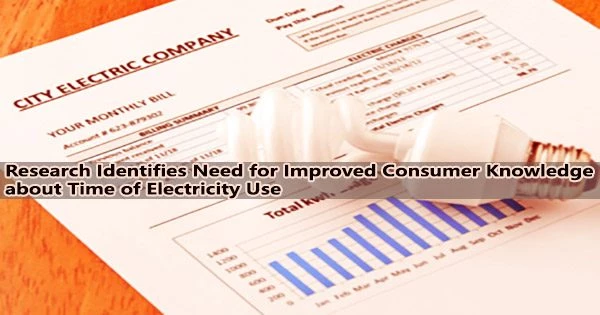As utility companies transition to time-of-use energy pricing models, a recent study published in Nature Energy discovered that electricity users frequently lack awareness of their daily energy-use patterns at home. This could have a significant financial impact.
The authors of the study argue that consumers must be aware of how and when they use electricity in order to make informed judgments about billing options if utilities modify their pricing systems.
“Energy systems and the grid are undergoing drastic changes right now, and we need to update the way we talk to people about their energy use,” said study co-author Hilary Boudet, an associate professor of sociology and public policy in Oregon State University’s College of Liberal Arts. “From this work, it seems that people are not aware that when you use energy may be just as important as how much energy you use.”
According to Boudet, the time of electricity generation and consumer energy use frequently diverge when renewable energy sources are incorporated into the electrical grid. Because there are few choices for storing electricity due to this mismatch, utilities are shifting toward rate structures that have higher pricing during peak times.
Researchers from OSU and Stanford University examined the energy-usage habits of 186 California residents who authorized access to the data from their homes’ smart meters, which monitors both hourly fluctuation and total energy use.
Participants in the study also filled out surveys on how they thought their daily energy use looked, which researchers compared to the actual energy use patterns in their homes.
The main “load shape” of a home, or the curve on a graph indicating the time of day with the highest amount of energy use, was something researchers wanted participants to be able to accurately characterize. The study examined participants’ energy data and load shape awareness before and during California’s shelter-in-place orders in the early days of the COVID-19 pandemic.
The “evening peak” load shape was present in around two thirds of dwellings both before and during shelter-in-place. A very small proportion of households showed a “morning peak” at either time.
Energy systems and the grid are undergoing drastic changes right now, and we need to update the way we talk to people about their energy use. From this work, it seems that people are not aware that when you use energy may be just as important as how much energy you use.
Professor Hilary Boudet
The remaining percentages were divided between “midday peak” and “dual peak,” with midday peak being more frequent during shelter-in-place and dual peak becoming a little less often.
During the pre-shelter-in-place period, 51.1% of participants correctly identified their load shape, compared with 30.6% for the shelter-in-place period.
“Evening peak is the most common load shape primarily because that’s when people working a 9-to-5 schedule return home and start cooking, cleaning and running heat and air conditioning,” Boudet said. Heating and cooling, especially heating water, are some of a home’s biggest energy users.
“These peak hours are also when many forms of renewable energy, such as solar power, are less available, leading utilities to turn to “peaker plants” that kick on to address the evening surge in demand and often rely on dirtier fuel sources,” Boudet said. “As utility companies start implementing “demand response” programs like time-of-use pricing, which charges higher rates during peak hours, evening usage will cost customers more.”
“You’re asking customers to respond to a price signal without real information about how they’re using energy,” said Chad Zanocco, lead author of the study and a postdoctoral scholar at Stanford University. “We need to incorporate this consideration of time into our conversations around energy use, so that people understand that it matters when energy is being produced, in terms of emissions.”
In order to find strategies to change their usage patterns away from late afternoon and evening hours, Boudet advises consumers to learn about their energy use by looking at their smart meter reports, if they are made available by their utility.
For instance, doing washing or cleaning earlier in the day would consume less energy later in the day. Boudet said residents can also look into more energy-efficient appliances so their overall energy use is lower.
While more affluent customers might buy items like smart home appliances that automatically adjust temperature settings or boost energy efficiency, she claimed that this type of intervention can unfairly burden lower income households by pressuring them to change their behavior in order to keep their bills manageable.
Co-authors included Gregory Stelmach from OSU and Tao Sun, June Flora and Ram Rajagopal from Stanford University.
















